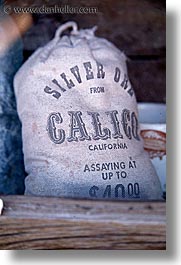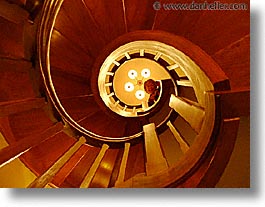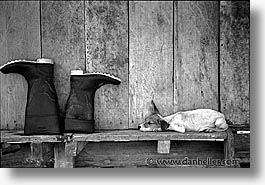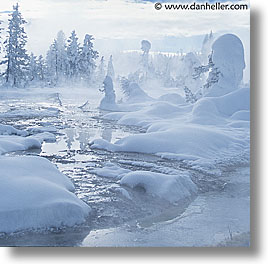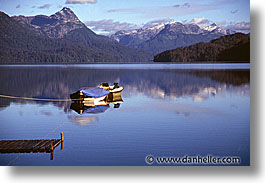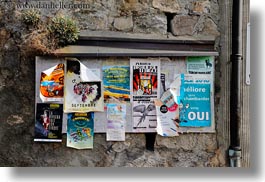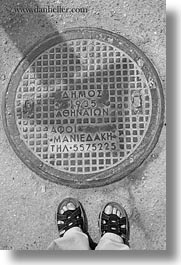|
Markers indicate locations for photos on this page.
Accuracy responsibility of Google Maps
Google Map Goes Here
If you see this text, the map is still loading (or there's an error). |
The first mistake people make is assuming that lower prices bring in sales. As the logic goes, as you build a name and reputation, you can then command higher prices. But that's not how it works; there are other factors involved, and we'll get deeply into them in this article. To do proper analysis, we need to apply the most basic and fundamentals of economics, the first of which is the relationship between price and volume. Your goal is to optimize your financial return at any given point in time. Simple example: selling 10 prints for $10 each yields $100, but a sale of one print for $250 yields more than twice as much. The real question is which is easier: ten sales at a lower price, or one sale at a higher price? That's why more intelligent analysis is necessary than merely guessing. There are many factors that affect sales volumes and perception of value, so let's get started.
Each of these items are complex, and we'll get into them, but you need to
start by setting your compass in the right direction: By understanding the
art-buying market, which is extremely broad, you can establish how your
own work fits into that, which helps you identify your target customer,
which helps you determine where they go to purchase. Once you're in the
right place with the right buyer, understanding their buying decisions
is critical. This last step helps direct you in ways to better "package"
your product, including setting price points.
There are essentially three kinds of art buyers, and although they are discrete categories, they do overlap, so prepare for the caveats to the rules that follow. For now, let's just define each of the classes of buyers: collectors, aficionados, and consumers.
This is the art buyer that knows the art world well, but doesn't collect or invest because of limited funds. This presents an opportunity for the accomplished (but still relatively unknown) artist who's exhibited before and is generally well-received. Getting an opportunity to exhibit work at public TV or radio events, or other high-brow, educational, or elite functions is a great way to get exposure into this class. Donating art for fund-raising drives that attract affluent benefactors is another avenue, though it doesn't yield income. (Remember, it's the exposure that matters; the income will come later as you get better known.)
Many people are attracted to the art market that don't know much about it, but the pretend aficionado doesn't know what he doesn't know. For example, he may know Henri Cartier-Bresson's name and some of his works, but he may not always pair them together correctly. Yet, he speaks confidently about the art form, unaware of when he makes factual errors. Normally, one would overlook the pretend aficionado, except that he buys from artists who are good, but not quite experienced.
The wanna-be is ambitious about art and is still learning. His inexperience makes him overly cautious in what he chooses to buy, often waffling so much that the sales cycle tends to be lengthy and, at times, frustrating. But, he loves photography in general, even though his tastes are often inconsistent and undeveloped. On the upside, the wanna-be is not afraid of spending money for artwork, although he usually buys less-expensive works that the other groups wouldn't touch, making him more accessible to the emerging artist. He is also very accessible; he's often at fairs, street markets, cafés and other venues that specifically exhibit art.
One last note about selling to the consumer: many consider the consumer
market to be a career-killer for the true "artist." Because it is frowned
upon by art directors, gallery owners and museum curators, those who are
serious about developing their credibility as an artist try to avoid anything
consumer-related for fear that it will come back to haunt them.
Many photographers think of similar scenarios: consumers browsing the photographer's website, or casually walking through the displays at an art fair, etc. They imagine the unintentional shopper thinking, "Hmmm... I've got to go now, but now that I've invested time into looking at this, and I kinda like it, should I buy it?" So, the photographer tries to anticipate when the consumer does the quick glance at the price, so he tries to pre-negotiate it by making it low so the consumer will buy. Reality doesn't work this way. Of the rare art buyer who happen to be impulsive, it's usually because they need something and they've been thinking about it in the backs of their minds now and then. What do they need? Usually, a piece over the laundry machine, or something behind the desk at the office. This is an unpredictable and often unreliable group, but the randomness of their popping up unexpectedly can account for an appreciable percentage of sales if you position yourself well physically. For example, you live in tourist communities, or exhibit works near design centers or other places that sell home or office furnishings. This might give you access to someone who just bought a new house or moved into a new office. Some hire professional art buyers to acquire art for them to solve this need, so getting close with such people is a good idea. (Again, hang out at the design center for a while.) Also, commercial space is often filled with art that is acquired by such professionals. Because quality and cost are both critical here, not to mention the lower-risk assessment of not having artwork damaged or stolen in a public space, buyers for these types of venues sometimes acquire works not from famous artists, but from undiscovered ones like you and me. (Of course, this rule of thumb varies considerably; the local City Hall may choose a dreadful piece solely because the artist is a famous icon from the city.)
There are no strategies to target the spontaneous buyer, because he
just follows the same buying patterns as the others. However, the
one difference is that he goes through the process at an accelerated
rate. That is, when he decides he needs to buy something, whether
for need or spontaneity, he goes through the purchasing decisions
quickly. The key lesson to learn when recognizing this buyer is: stop
selling. We artists get excited when someone shows interest, and often
oversell the piece because, well, most people back down, and we don't
want to let them go. This results in long discussions about the photographic
eye, the process, the places you visit and experiences you've had.
The spontaneous buyer doesn't care about that and may just cut to
the chase and talk price. The worst thing you can do is push him beyond
his comfort zone. Lead, but don't push.
For the purposes of selling prints as income (as opposed to "career
development"), most photographers find that the best target audience
is the art aficionado, in all their forms. Note: this does not mean
that you may not find sales opportunities in the other categories.
However, when it comes to planning and investing in longer-term
strategies, it's better to focus on the correct market segment for you,
and pick up the extra sales along the way if they happen.
Getting started involves getting to know your community—the venues, the events, the people. Usually, the first place to look is the newspaper or on the internet for local activities. Art centers are a good source for finding the calendar of photography events (which are often mixed with other art-related affairs). Some places are harder than others to get accepted, so the easiest way to start is by entering competitions. If your work is reasonably proficient, you can get noticed by a judge or two and maybe get some ribbons. The best strategy for this route are "blind juried competitions," where the judges don't know who the artists are. Blind judging removes the disadvantage of competing with well-known names in the field who often get awards based on their reputations alone. (See Techniques on marketing your photography business.)
Also, it's not enough to just enter competitions; you have to use
those events as public relations opportunities. By sending announcement
postcards to potential buyers or individuals whose relationship would
be strategic to your development is advisable. Be sure to invite owners
of other venues where you'd like to exhibit your work in the future.
Personally escort such people to see your work if you can. If you've won
ribbons, even better. Marketing yourself well is often about combining
opportunities to form new ones, or leveraging one success to support
a new one. And while you're focused on all that, you may be pleasantly
surprised that aficionados have been picking up some of your pieces.
One way you can really optimize your returns, however, is by broadening
your sales inventory to include more than just expensively framed prints.
Your photos can sell in a variety of formats, ranging from unframed
prints to small 4x6 frames, to a rack of postcards and such. You might
also share space with other artists, to reduce costs while adding
perceived size to your selling space. Again, attending events like this
and talking to many artists (not just one or two), will give you a
good sampling of what you can expect. This is also important because
different geographic regions have different expenses and buying patterns,
which may help you ascertain how well your art fits into the culture.
Professionals often broach the topic of "what sells," which assumes
buyers choose the "best" picture among a group (as if "best" is
deterministic). Because one can find situations where anything sells,
a more intelligent question is, "How do people make choices in the art
they buy?" And a sub-text question is, "what decision-making processes
do people go through when choosing?" Now we're getting somewhere.
In this, and just about every aspect of commerce (and especially in art), name recognition has more to do with perception of value than any other aspect. People are willing to pay a higher price for a brand they trust. In art, it is the brass ring that everyone strives for. Only well-known career professionals get to experience this, and by the time they have name-recognition, they don't follow the same sales strategies as the rest of us do to move their artwork.
For the rest of us who cannot rely on name recognition to affect price or
saleability, we need to look at other decision-making factors that affect
people's perception of value. Because of art's intangible qualities,
people tend to employ two different forms of analysis when evaluating art:
comparative analysis, and complementary analysis. Let's discuss each.
An example of Comparative Analysis is found in the exercise of picking wine at a restaurant. Most surveys on how people choose wine (which can be found in annual food-related periodicals) show a pretty consistent pattern year over year: when ordering at a restaurant, people often opt for the wine whose price lies about two-thirds up the price list from the least to the most expensive choice. Because most people don't know wine that well, their "perception of value" is governed by the only methods they know: heuristics learned from experiences buying other things (stereos, cars, groceries, or even art). The lowest price item is generally accepted as being the one to avoid, and the highest-price item is thought to appeal to that strange demographic where "money is no object."
Of course, this isn't necessarily true for buying everyday items, like
a hammer, for example. But the analogy with wine is more apropos because
the psychology involved in the art-buying process is more similar to that
of the wine-buying process. Art, unlike a hammer, has no "functional"
value in the home; it's value is based largely on perception. But, because
it is also a reflection of you (your taste, sophistication, values, etc.),
people's comparative analysis, whether valid or not, tells them that more
expensive items are worth it.
To witness how complementary analysis applies to selling art: have you ever gone into a gallery and expressed interest in a particular picture? The sales person usually takes you to a back room, hangs the photo on a specially-lit location, offers you wine and cheese, and then fades the lights up and down to illustrate how the mood shifts dramatically in the picture's scene. (A wine shop won't do this to sell you a bottle of cabernet.) The effect, of course, works, which impresses most unsophisticated buyers; the reality is that this effect works on just about any picture (although the technique is more often used with paintings). The technique works, so it's used a lot. This is "complementary analysis" in action. We see how comparative and complementary analysis play a role in selling art, and how it affects perception of value. How about pricing art? Abstractly speaking, a photo priced at $1000 is less likely to sell if it's next to one priced at $100. The $100 piece, however, is more likely to sell for $200 because of comparative analysis. This is an oft-used technique for people who have no intention of selling the higher-priced item, but want to raise the perceived values of the lower-priced ones. By contrast, a series of pictures (i.e., a collection intended to show as a group) are often priced identically, piquing the buyer's sense of comparative analysis. Studies have proven this time and again, which is why you rarely see artwork mixed in with non-comparable works. (By "comparable," I do not mean in the artistic sense; I mean in the "perception of value" sense.)
To best sell and price your own work, you need to choose pictures that
enhance each other in style, taste, and even value. You can introduce
a "killer shot" that's printed very large and framed exquisitely (i.e.,
expensively) to raise the perceived value of the lower-priced prints,
to employ the best of both kinds of value perceptions, comparative
and complementary.
When it comes to emerging artists, it was clear right away that I wasn't going to suddenly get interest just because I hung a "for sale" sign on my website. For the first couple of years, I priced low to attract sales, but this just turned into a sink hole of time that I couldn't afford to maintain. At one point, I considered not selling prints at all just to keep people from asking questions that were sales-related, but never turned into sales. But, instead of withdrawing completely, I figured I'd just raise my prices so that people would just stop asking. I raised the price for my smallest print (8x10) from $25 to $200, and I added bigger sizes up to 40x60" with ridiculously high prices.
Because I've decided to sell solely and directly through my website, I've chosen a particular sales model that may not necessarily translate to how you choose to sell. You may need to manage your sales process differently. If you're selling into markets where prices range from for $150-$300 for reasonably-sized prints, such as art festivals, street markets, fairs, cafes, etc., then this is quite different than selling lower-priced prints at the $10-35 range in gift shops.
If you are selling art through an agent, gallery, distributor or other
reseller, they are generally your best advisers on how to price your work.
But, be careful not to go to them for direct advice to you unless they
are actually representing you. The mysteries of appropriate price points
can be as elusive to them as it is to me and you. Take any "specific"
advice with a grain of salt.
There is another advantage to not signing prints: it's adds a huge chunk of time to the print fulfillment process. I would make a print, have it shipped to me, where upon I'd sign it, then re-package it and ship it to the customer. This not only added a few more days to the delivery process, but added more expense as well. What's more, if I were out of town, I couldn't fulfill orders till I returned. Because of these and a few other minor reasons, I no longer sign prints unless people specifically ask for it. (I do get requests from time to time, but it's more because there are some who feel a closer association with the artist, not because of a perception of value.) As for numbering prints, this is another aspect to art photography that is somewhat misunderstood by artists. The only reason to number your prints is to indicate that you will only make a limited number of such images at that size, an implication that isn't as widely known. There's only one reason to limit the number of prints: to enhance the value for collectors. The only time this value is appreciated is if you are famous enough that there is a demand for limited edition prints. If you're not, then it's somewhat pretentious to number your prints. It's as though you're telling people that you're more important than you actually are.
Although the alert reader may sense an air of disdain I have for
unjustified and unapologetic self-promotion, I actually do respect
those who can actually pull it off. Indeed, such a technique may be
most effective in fairs and other public venues where pretentiousness
flies through the air like the smell of popcorn wafting through a movie
theater. But, at the end of the day, you have to weigh this against the
pitfalls: you may not fool enough people to make it worthwhile in the
long run, and those you really want to impress (the smart art buyers or
gallery owners) know better. Sending the wrong impression about yourself
may work against you too.
Framing styles and tastes vary dramatically. For example, a popular method is to use a very wide margin around the photo with matting that isolates the image as much as possible from whatever else might be around it (pictures, windows, doors, etc.). Similarly, people often opt for thick frames to establish an even firmer border. On the other end of the spectrum is the minimalist design, featuring very thin metal frames and extremely wide mats around very small prints. Color pictures make it tempting to choose mats whose colors match or contrast the picture inside, which can be quite effective for specific prints, especially those that don't share a wall space with anything else. (Hence, these tend to be larger prints where the colors of the image and the mat/frame combination are chosen to compliment the interior design of the room.) Take any trip to a framing store and you'll see that the selections are so broad that your head can spin with ideas, all of which seem ingenious at first.
For my work, I've eventually come to the conclusion that a simple black wood frame (about ¾" thick) and a plain bright white mat is best. I may choose an all white frame/mat, or all black frame/mat, depending on the context, and in rare occasions a thin silver metal frame can be effective. Matting tends to be anywhere from 3½" to 5" wide all around the photo (with an extra ½" on the bottom). This satisfies two important needs that you might consider:
Many pictures with the same framing in an environment gives a better sense of balance and intention. It looks less busy, drawing the viewer more to the picture itself. (Oddly, this doesn't work with paintings, which require almost an opposite approach.) With photographs, a lack of consistent framing can make a series of photos appear almost amateurish. (If not the photos, the interior design itself.) Hence, the goal of "intention" has a subtle, almost subliminal influence on the viewer.
Using simple, basic neutral framing and matting design (like black, white or grey, and using plain wood or metal with few decorative accents), allows photos to be used in any room, in any house or office, and with just about any photograph. This also makes it simpler for customers who are undecided about what they want.
If a customer requests a framed print, I have the lab ship the product
directly to my local framer, who frames, boxes and ships directly to
the customer. Aside from an initial consultation of selecting the style
of matte and frames noted above, I am not involved in this process at all.
It is important to illustrate at this point that I only print, frame
and ship upon receipt of an order. I don't create inventory, ready to
sell. When I got started in the business, I had printed a number of
pieces that I thought would sell well, and placed them wherever I could:
cafés, restaurants, dentist waiting rooms, and my dog's vet
clinic. Although I've heard success stories of people selling many prints
this way, I don't know any of these people, and it's never happened to
me. (I have gotten calls to do other assignments, which is good, but that's
more of a marketing strategy than it is a sales strategy for prints.)
To this day, I still have most of those early prints in my garage (or
in my house). Because I sell over the internet, I don't have to have
an inventory of framed pictures, reducing my cost of doing business. I
realize that not everyone will run their business entirely on the web,
which brings us full circle to the point of this chapter: to sell prints
successfully, you need to find the right venue for the right audience
selling the right product. Your choice in mats and frames needs to
satisfy the two objectives noted above, or you too will find a garage
(or house) full of unsold prints.
Regarding the glass, framers advise using Plexiglas instead of regular
glass because it's lighter and doesn't break (as easily), thus making
shipping easier, less expensive and less likely to result in a damaged
product. Two great reasons! The catch is, Plexiglas looks worse than
real glass in front of a print. I'll use "Plexi" if the customer
requests it (especially the non-glare kind), but I never choose it on my
own. (Similarly, non-glare glass is like Plexiglas in that it alters the
color balance, and distorts the ultimate image. This is a tradeoff with
the glare of light if the photo is placed in a highly lit environment
where reflection can impact the viewing.)
Because I print digitally by a professional lab, print fulfillment is simple. When a customer places an order, I upload the digital image to whichever photo finishing lab's website that I happen to be using at any given time, and they turn around the print and drop-ship it directly to the customer. If it's an order for a framed print, I have them ship to my framer, who turns it around and ships to my customer. My goal is to spend as little (zero) time as possible in this process. When you consider the time, materials and other resources necessary to print and ship a product, this is one of those few occasions where I wholeheartedly endorse outsourcing to the fullest extent. Because this is a rapidly evolving market, there will undoubtedly be various options for doing this more efficiently and less expensively as time goes on.
Some like shipping prints flat, which is also ok in principle, but it's bulkier, harder to produce a shipping-safe package, and is more susceptible to damage under unusual situations. Still, for smaller prints, I'll use a flat envelope (like FedEx Express Package) and add cardboard to secure it. This is usually safe, and I've never had a problem. Seems obvious, but if you're feeling insecure, don't worry about it. It's just a matter of experience.
I used to ship using the post office for years until the first time a print got damaged. There was no recourse because I didn't sign up for the insurance, etc. While I've never had the post office lose a print, it has happened to others. For this and other easier logistical reasons, I use an express service (which the post office also provides). FedEx is nearby and I like using their website to generate express shipping labels, so I happen to favor them at the moment. UPS is equally good, and while I have used them, they are slightly less convenient for my particular geographic reasons. (It costs extra money to have packages picked up, which is why I drop it off.) All carriers are equally annoying for international shipments, but this isn't their fault—it's the nature of the world we live in.
The carrier you use becomes even more important for framed prints,
mostly because you've got more to lose, so you need more accountability.
Like buying a computer, where all vendors really have the same product
and the real differentiator is in customer service when something goes
wrong, so too is it for shippers. They all provide the same service,
but how easy, fast, and thorough they are in dealing with claims is
what differentiates them. When something breaks or goes wrong, all shippers
are way at the low end of the satisfactory scale, so it's really a matter
of choosing among bad options. I've had both FedEx and UPS damage prints,
and both have resulted in extremely difficult, foot-dragging customer
service when it comes to refunding money. Clearly, everyone's experience
varies, and just because I've had bad experiences, doesn't mean you will.
However, one major piece of advice I can offer is: when you ship, go
directly to the shipper; do not use an intermediary. The reason is
that if you go to a shipping store, they are the entity that has to
file the claims on your behalf, and the shipper will refuse to work with
you directly. The problem with this process is that the intermediary
shipper usually has no incentive, time, or even manpower to deal with
claims. In short, they don't care.
When it comes to prints, don't turn into a prima donna. You may love your own work, but don't hold on too religiously to that feeling. What you actually sell may surprise you. The goal is to promote what you think is your best work, but realize that your second-choice pictures may be the ones that move. How close you get to selling what you also think is your best stuff is contingent upon how well you know your audience. Why and how people buy artwork is as diverse as why they buy cars, music, or sunscreen. When you look at masses of people as a whole, you see patterns of behavior that you never could have expected.
Click to recommend this page: |
|

